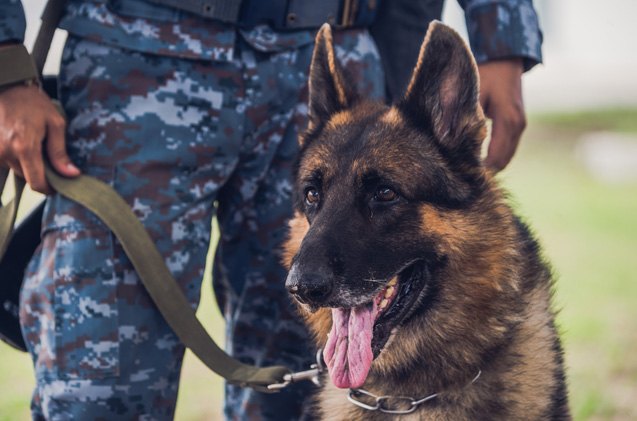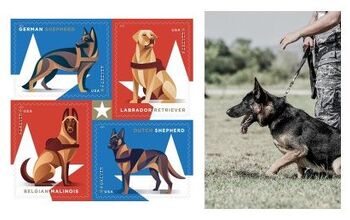10 Things You Didn’t Know About Military Dogs

Some dog breeds were developed to hunt, other dogs were bred to serve as household companions, and some breeds were designed to work. Military dogs are some of the toughest, most disciplined and hard-working dogs in the world, though you may never actually meet on yourself. What else is there to learn about military dogs? Keep reading to find out!
- Military dogs are trained in weapon, bomb, and drug detection.
When you think of police dogs, you probably picture a dog chasing down a dangerous subject and bringing him to the ground. Military dogs are trained for this sort of work as well, but that is not the full extent of their duties. They are also trained in weapon, bomb, and drug detection. Military dogs go through rigorous training and, when fully trained, they can detect bombs, drugs, and weapons more accurately than any military equipment available.
Related: Top 10 Best Military Dog Breeds
- There are more than 2,500 dogs in active military service.
When you think about the number of people in active military service, the number is over 1.3 million. But how many dogs are in active military service? Roughly 2,500 in active service in the United States and another 700 are deployed overseas.
- Most of the dogs who work in military service don’t come from the United States.
As many as 85% of the dogs used in military service don’t come from the United States – they come from Germany and the Netherlands. Dogs chosen for military service come from long bloodlines of dogs bred to work. The U.S. military is currently working to use more USA-born and -bred dogs.
- Dogs have ben used in combat during every major conflict.
Military dogs have a long a complicated history – they have been involved in nearly every U.S. combat situation or conflict. They were not officially recognized, however, until WWII.
Related: Elite Ranger Military Dogs Suit Up With Upgraded Tactical Gear
- Military dogs are priceless, but they are worth thousands of dollars.
After all of the time and training it takes to develop a military dog, these dogs are extremely valuable. Though they are priceless in terms of their value, a fully-trained bomb detection dog is worth something around $150,000 when all is said and done.
- The training process is rigorous and only about 50% make it through.
In order to be a military dog, a dog must be smart, healthy, and willing to learn. Dogs with physical health problems like hip dysplasia are generally not accepted and the dog must be responsive to commands. You may be surprised to learn that one of the most important traits for a potential military dog is high motivation for rewards. Kong toys are used as rewards in training, so the dog must be reward-motivated to make it through training.
- A wide range of breeds can be used for military service.
German shepherds are some of the most common military dogs, but other breeds can be used as well. The more trainable and intelligent the dog, the better, so some other breeds used include Labrador Retrievers and Belgian Malinois.
- Military dogs form close bonds with their unit.
In many cases, military dogs are trained to work closely with one handler and they form a strong bond of love and trust with their handler. Military dogs can also bond with their unit, but there is something special about the bond between a dog and his handler. If one of the two falls in combat, the other is devastated by the loss.
- A military dog can suffer from post-traumatic stress disorder just like a human.
Post-traumatic stress disorder or PTSD is very common among soldiers, but you may not realize that it can affect working military dogs as well. If PTSD starts to affect the dog’s ability to perform his duties, he will be released from service and offered up for adoption.
- Military dogs used to be put down after they were retired.
Though this practice is no longer used, until the year 2000, military dogs were either abandoned or put down when they were no longer fit for active duty. Today, handlers and their families are given the first option at adopting retired military dogs at the end of their service.

Kate Barrington is the loving owner of two cats (Bagel and Munchkin) and a noisy herd of guinea pigs. Having grown up with golden retrievers, Kate has a great deal of experience with dogs but labels herself a lover of all pets. Having received a Bachelor's degree in English, Kate has combined her love for pets and her passion for writing to create her own freelance writing business, specializing in the pet niche.
More by Kate Barrington






















